Twelve-step programs are mutual self-help programs that use a combination of gradual goals (i.e., steps) and peer support to help recovering substance addicts establish and maintain a long-term commitment to avoiding further substance use. However, not all people who join these programs attend regularly or successfully abstain from substance intake. In a study published in May 2014 in the journal Addiction, researchers from the U.S. and Norway assessed the effectiveness of a technique called motivational intervention in helping 12-step participants increase their program involvement and their ability avoid substance relapses.
12-Step Approach
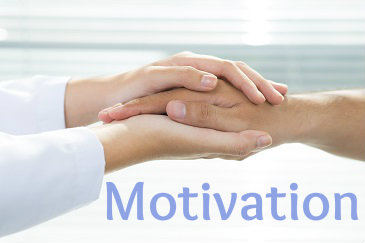 The 12-step approach was initiated in the 1930s with the formation of Alcoholics Anonymous. Participants in 12-step-based programs commit to a progressive series of actions designed to help them recover from active involvement in the use of alcohol or other substances of abuse. These actions including admitting a lack of self-control over addictive behaviors, making a call to a higher or greater power to assist in the recovery process, examining and atoning for damaging conduct while under the influence of drugs or alcohol, and eventually providing assistance to others not as far along the path of recovery. As a rule, 12-step programs rely heavily on peer sponsorship provided by longer-term members. The 12-step approach is widely used and has proven effective as an aid to the substance recovery efforts carried out in treatment centers that deal with problems such as alcohol addiction, cocaine addiction and opioid narcotic addiction.
The 12-step approach was initiated in the 1930s with the formation of Alcoholics Anonymous. Participants in 12-step-based programs commit to a progressive series of actions designed to help them recover from active involvement in the use of alcohol or other substances of abuse. These actions including admitting a lack of self-control over addictive behaviors, making a call to a higher or greater power to assist in the recovery process, examining and atoning for damaging conduct while under the influence of drugs or alcohol, and eventually providing assistance to others not as far along the path of recovery. As a rule, 12-step programs rely heavily on peer sponsorship provided by longer-term members. The 12-step approach is widely used and has proven effective as an aid to the substance recovery efforts carried out in treatment centers that deal with problems such as alcohol addiction, cocaine addiction and opioid narcotic addiction.
Motivational Interventions
Many people who enter substance recovery programs do so with mixed feelings about the recovery process. In fact, significant numbers of program participants enter treatment only at the urging of others. People with ambivalent or hostile feelings toward substance recovery commonly fail to participate fully in their programs, meet the specific objectives that programs set for their clients/patients or successfully complete their program involvement. Motivational interventions are designed to help program participants uncover the mixed or negative feelings they may have about substance recovery, and also to help them change their minds and become more willing and proactive in their treatment. As a rule, practitioners of motivational interventions work cooperatively with clients/patients in an interactive process that strives to avoid a confrontational or antagonistic atmosphere. While a motivational intervention can help at almost any stage of treatment, it typically has its biggest impact in the initial stages of recovery.
Usefulness In 12-Step Programs
In the study published in Addiction, researchers from Stanford University, the Department of Veterans Affairs and Norway’s University of Oslo and Sorlandet Hospital used an examination of 140 Norwegians receiving treatment for alcoholism to assess the usefulness of motivational interventions in promoting involvement in 12-step programs. All of these study participants were in inpatient facilities for alcohol detoxification. Half of the participants received a motivational intervention called 12-step facilitation in two 30-minute sessions. This form of intervention is designed to increase clients’/patients’ level of comfort with 12-step involvement. The facilitation sessions provided during the study included detailed explanations of how substance addicts lose control over their behaviors, a DVD on the 12-step process created by Alcoholics Anonymous and immediately available resources for making direct contact with 12-step groups. The other half of the study participants received only basic advice on 12-step resources in a brief informational session.
Six months after the study participants concluded their involvement in inpatient detoxification, the researchers compared the level of 12-step involvement among the people who received motivational interventions to the level of involvement among the people who only received brief advice on 12-step resources. They concluded that the participants who received motivational interventions were significantly more likely to attend 12-step meetings than those who received only brief advice. They also concluded that the motivational intervention group used both alcohol and drugs on fewer total days than the brief advice group.
Despite the increased 12-step involvement and fewer days of substance use, the authors of the study published in Addiction concluded that the recovering alcoholics who received motivational interventions did not remain abstinent from substance use any more often than their counterparts who received brief advice on available 12-step resources. In addition, motivational intervention did not lead to a decrease in the severity of alcohol-related symptoms. Still, the authors note that, since motivational intervention recipients do attend 12-step meetings more often and use drugs and alcohol on fewer days, the technique may prove useful as part of the recovery process for alcoholics who go through alcohol detoxification.
American attitudes toward drugs and drug users are changing. A few decades ago Americans wanted stiff mandatory sentencing for drug users and dealers. This has led to crowded prisons, strained state budgets and little headway in terms of changing drug behavior. A recent poll revealed that two-thirds of Americans are in favor of drug treatment rather than criminal prosecution.
Jail Or Rehab?
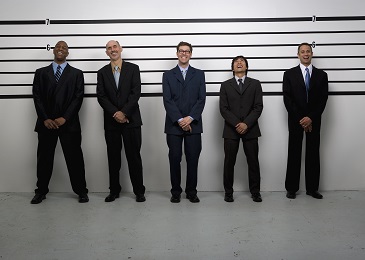 The Pew Research Center has polled the country on this subject and says that Americans would rather see offenders with no history of violence get help as opposed to jail time. Pew talked to 1,821 U.S. adults, finding that 67 percent felt the emphasis should shift toward treatment, just over 26 percent advocated for a continued focus on punishment and seven percent said they could not decide on which course was best. The poll was conducted for one week in February 2014.
The Pew Research Center has polled the country on this subject and says that Americans would rather see offenders with no history of violence get help as opposed to jail time. Pew talked to 1,821 U.S. adults, finding that 67 percent felt the emphasis should shift toward treatment, just over 26 percent advocated for a continued focus on punishment and seven percent said they could not decide on which course was best. The poll was conducted for one week in February 2014.
The two-thirds majority felt mandatory sentencing should not be applied to small scale crime, especially if it was marijuana-related. This is a significant shift in public opinion since as recently as 2001 more than half of polled Americans still supported strong penalties and prison sentencing for drug offenses, including marijuana.
The President and his administration have been lending voice to the move away from harsh mandatory sentencing. Prosecutors show less support for the idea, but so far President Obama has enjoyed Congressional support from both sides of the aisle when he suggests eliminating most mandatory sentences.
Marijuana Legalization
The poll discovered that 49 percent support the legalization of medical marijuana use, and 39 percent support legalizing recreational use. Just 16 percent maintain that marijuana should continue as an illegal substance in this country. But nearly all those polled, on both sides of the issue, expressed the belief that marijuana will eventually become a legal substance in America.
This is a notable change in public sentiment. Back in 2010 Pew reported that 41 percent supported legalization, while a majority – 52 percent – still thought the drug should be illegal. The new poll is essentially a flip of prior attitudes. At the moment medical marijuana use is legal in 20 states and recreational use is legal in two.
The prevailing attitude among Americans seems to be that a person should be free to use marijuana as long as they do it in the privacy of their own home. Even though they favor loosening the laws surrounding marijuana use, Pew reported that 63 percent did not want people to use it in public, and 44 percent did not want to have a dealer present on the street where they live.
Americans appear ready to give up on the fight against marijuana, but they still have some misgivings. Many are concerned that when marijuana is more available more young people will be likely to give it a try. And even though the country is moving away from sending drug sellers and users to prison, they still think drugs are an issue. Over 50 percent of those polled said they thought drug abuse was a “serious problem,” and just over 30 percent said drug abuse is a “crisis.”
From the White House to ordinary households, the feeling in America seems to be “let’s put small scale drug users into treatment, rather than prison.” On the one hand Americans are ready to allow fellow citizens free access to marijuana, but at the same time they worry about where that policy may lead. The majority of Americans seem to feel that fear of punishment has not been effective in reducing drug abuse and are ready to try a new approach.
Two trends in substance use are affecting the bottom line among small businesses. One is a significant increase in the abuse of prescription painkillers. The other is the increased use of marijuana as a result of increased deregulation.
According to a survey conducted by Employers Holdings Inc., one out of 10 small businesses report having employees show up to work while under the influence of at least one controlled substance, with lost productivity and potential insurance costs affecting the bottom line of the business.
Many companies require that employees provide a clean urine or blood sample both at hiring and at the discretion of the employer for random testing. However, in some cases, the employee may arrive at work visibly affected by a substance.
Prescription Drug Use
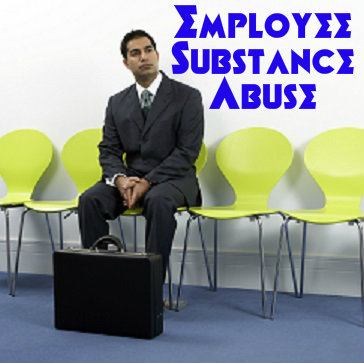 Opioid misuse has been on the rise. The U.S. Centers for Disease Control and Prevention report that more overdose deaths are now recorded for prescription opioids than for heroin or cocaine.
Opioid misuse has been on the rise. The U.S. Centers for Disease Control and Prevention report that more overdose deaths are now recorded for prescription opioids than for heroin or cocaine.
Prescription drug abuse often begins with a legitimate pain problem, often resulting from a serious injury or chronic disease. The patient may not receive adequate warnings, or they may not exercise the necessary caution in avoiding addiction to the drug.
In other cases unlocked medicine cabinets provide an opportunity for forgotten pills to be pilfered. Opioids can produce the same high as heroin, and they are a popular choice for experimentation. Many users mistakenly believe that because the drugs are obtained through a prescription from a doctor they aren’t as dangerous as street drugs.
Instead, experts say, the use of opioids can be just as dangerous as street drugs. Common reactions include a racing pulse or stroke. In some cases users may combine the drugs with other pills to make a unique cocktail and significantly increase the likelihood that they will experience negative side effects.
One potential danger of using opioids is that when a user runs out of opportunities to obtain prescription opioids from the medicine cabinets of friends and relatives the addiction may be fully developed. Buying pills on the street can be very expensive, costing $80 to $100 per pill. The remedy, in too many cases, is to start using heroin. Heroin is available and cheap, compared to prescription painkillers.
Marijuana Use Increasing
The increasing legalization of marijuana is also becoming a challenge for employers. Many don’t believe that their employees are able to work safely while under the influence, and are struggling to adequately prevent the substance from impacting their business, the safety of their employees and those they interact with on any given day.
With states beginning to allow the possession and use of marijuana, the impact is being felt by small businesses. In Colorado, where marijuana sales are booming, employers are scrambling to compensate for the impact the drug can have on their employees and their businesses.
More than half of employers surveyed even mentioned over-the-counter medications as a particular danger to employees and those around them. Three-quarters of the employers agreed that marijuana, prescription painkillers, alcohol and illicit narcotics presented a danger to their employees.
The survey was conducted by International Communications Research, who interviewed 502 small businesses that were nationally representative of small businesses that have fewer than 100 employees.
Find Out If Some Businesses Reward Drug Abuse
Doctors and public health officials know that people who use marijuana or other forms of cannabis may be affected by symptoms of depression more often than people who don’t use cannabis. People affected by depression may get involved in cannabis use because they believe the drug will make them feel better. However, they may also get involved because they knowingly or unknowingly believe that cannabis use will reinforce their dysfunctional state of mind. In a study published in March/April 2014 in the Journal of Addiction Medicine, a team of American researchers investigated whether positive or negative cannabis-related expectations best explain use of the drug in people with depression symptoms.
Depression And Treatment
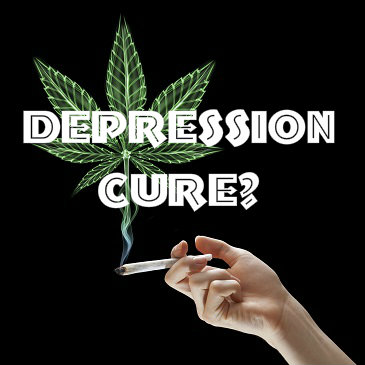 Current evidence indicates that depression is not directly related to increased chances of involvement in cannabis use. Instead, for a number of reasons—including genetic predisposition and exposure to certain environmental factors—people who receive a depression diagnosis are statistically more likely to use marijuana or some other form of cannabis than people who don’t receive such a diagnosis. In some cases, individuals already impacted by the effects of depression may turn to marijuana in an attempt to ease the strain of their mental health symptoms. In other cases, habitual cannabis users may undergo personality changes that feature depression-like effects or actual diagnosable depression symptoms. People who self-medicate their depression symptoms with marijuana or other forms of cannabis sometimes experience a temporary improvement of those symptoms; however, in the long run, this type of drug use can easily worsen existing cases of depression and leave affected individuals with a significant decline in their mental/emotional well-being.
Current evidence indicates that depression is not directly related to increased chances of involvement in cannabis use. Instead, for a number of reasons—including genetic predisposition and exposure to certain environmental factors—people who receive a depression diagnosis are statistically more likely to use marijuana or some other form of cannabis than people who don’t receive such a diagnosis. In some cases, individuals already impacted by the effects of depression may turn to marijuana in an attempt to ease the strain of their mental health symptoms. In other cases, habitual cannabis users may undergo personality changes that feature depression-like effects or actual diagnosable depression symptoms. People who self-medicate their depression symptoms with marijuana or other forms of cannabis sometimes experience a temporary improvement of those symptoms; however, in the long run, this type of drug use can easily worsen existing cases of depression and leave affected individuals with a significant decline in their mental/emotional well-being.
Drug Use Expectations
All people who drink or take drugs have expectations about the effects likely to stem from their substance use. Some of these expectations are “positive,” meaning that users believe they will feel better or otherwise gain a benefit from their intake of a given substance. Other expectations are “negative” and focus on the harms associated with the use of alcohol or drugs. As a rule, a person’s expectations influence his or her likelihood of getting involved in substance use. In real-world terms, this means that people who expect positive or beneficial results from drugs or alcohol have a higher chance of participating in substance use than people who expect negative or harmful results. In addition, positive or negative expectations of the impact of substance use can alter the ongoing experience of drug- or alcohol-related effects in active users.
Expectations In Depressed Individuals
In the study published in the Journal of Addiction Medicine, the U.S. research team used a test called the Marijuana Effect Expectancies Questionnaire (MEEQ) to assess the positive and negative expectations toward cannabis use in a group of 100 military veterans diagnosed with cannabis dependence (now known as one component of cannabis use disorder). These study participants also took another test, called the Inventory of Depression and Anxiety Symptoms (IDAS), designed in part to identify the presence of potentially diagnosable depression. In addition, all of the participants submitted information on the amount of cannabis they had consumed in the three-month period prior to the beginning of the study.
The researchers used a complex form of analysis to compare the results of each participant’s MEEQ and depression tests, and then used this comparison to help determine whether depressed cannabis users have positive or negative expectations toward intake of the drug. After completing their analysis, they concluded that cannabis use and depression are indirectly linked through positive expectations that depressed individuals hold regarding cannabis use. They did not find the same link between depression and negative expectations about cannabis use. The researchers found that the indirect link between depression and cannabis use is specifically related to a depression symptom called dysphoria, which revolves around an unusual state of unease, malaise or discomfort.
Researchers use the term indirect cause to describe contributing factors that help bring about a situation or condition, but don’t entirely account for that situation or condition like a direct cause. This means that, according to the conclusions made by the authors of the study published in the Journal of Addiction Medicine, positive expectations about the effects of cannabis help partially explain why depressed people use the drug, but don’t entirely explain why. Based on their findings, the authors believe that further examination of the impact of dysphoric depression symptoms may help broaden current understanding of why military veterans, in particular, begin using marijuana or other forms of cannabis.
Even in our connected and technological age, stigma persists about drug addiction. Parents may not want to believe that their child could become a drug addict, and there is still much misunderstanding about things such as prescription drug abuse and its risks. Education is a vital approach for dealing with this stigma and these prevalent misconceptions, and a recent forum held by the Council on Addiction Prevention and Education (CAPE) and the Wappingers Central School District (Dutchess County, New York) is a perfect example of the value of the approach. The increasing rates of drug abuse in Dutchess County is of great concern to politicians and local experts, and the success of the mid-March program by the Wappingers school district has led numerous other districts to plan similar events in April, with the aim of curbing the growing issue.
What Happens At Drug Abuse Forums?
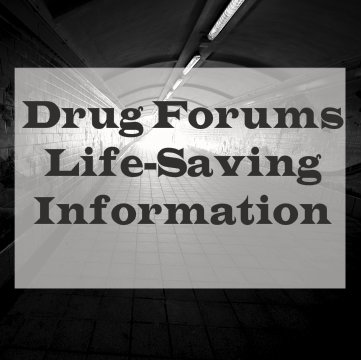 Drug abuse forums give those with direct experience of addiction and the process of recovery to share their stories, offering educational messages to the audiences, who are often teens but could also include their parents and members of the local community. This allows those in attendance to understand the sheer scope of the harm caused by drug abuse and addiction, and although not all of the stories end positively, many offer hope to those struggling with addiction by showing that recovery is possible. Talks will either be given by the ex-users themselves or by family members or loved ones. Due to their emotional nature, they are frequently poignant, moving and memorable.
Drug abuse forums give those with direct experience of addiction and the process of recovery to share their stories, offering educational messages to the audiences, who are often teens but could also include their parents and members of the local community. This allows those in attendance to understand the sheer scope of the harm caused by drug abuse and addiction, and although not all of the stories end positively, many offer hope to those struggling with addiction by showing that recovery is possible. Talks will either be given by the ex-users themselves or by family members or loved ones. Due to their emotional nature, they are frequently poignant, moving and memorable.
Lessons Learned The Hard Way
The event held in March featured many such stories told to a full auditorium at John Jay Senior High School. This was partially thanks to a new initiative on the part of high school coaches that makes attendance mandatory for student athletes, an approach praised by CAPE. The talks cut through the stigma surrounding addiction and showed that the process is very much one of “learning lessons the hard way.”
One speaker was Suzanne DeCosta, who spoke about her son’s addiction to narcotic painkillers and heroin. She described him as “smart, funny and lovable,” but during his teen years, what was once recreational drug use turned into addiction. DeCosta comments that “as a parent, you don’t ever want to believe your child is an addict,” but points out that this is wishful thinking—it can happen to anyone. Her son Michael overdosed on heroin, and has had numerous stretches in rehab. At present, he is two years sober, but the family is more than aware that it will require continued effort on his part to stay in recovery. They say they’re lucky to have him alive.
Other stories didn’t have the same positive, uplifting ending: Marcia Grant’s son, Roger, died at the age of 41 from a heroin overdose in a motel room. She described her son in his youth as “bright” and “affectionate,” but added that he was impulsive and reckless, pointing out that he broke a lot of bones. Doctors advised them that he would experience a lot of pain, and Marcia says they were right, “Pain, both physical and emotional […] kept bringing him back to drugs.”
The first signs of a problem came in his teen years when Roger’s grades began to slip and his behavior changed notably. He started to lie and his moods changed, and eventually—at the age of 22—he admitted to his issues and his parents tried to get him help. He was in and out of rehab centers, attending 11 inpatient programs, but would only have brief periods of sobriety and stability. He almost overdosed several times, and got into trouble with the law through his addiction. “At the time we didn’t realize that there was no simple fix,” said Martha. She added that he’d wanted to warn children about the risks of drugs, and she wanted to pursue this goal for him, in his absence.
Why These Events Are Essential
Drug education is vital, but dry repetition of statistics, risk ratios and far-off consequences don’t always pack much of a punch, particularly from an emotional perspective. The stories shared at drug abuse forums provide evidence for the potential consequences, but also offer a personal insight into the nature of addiction and the difficulties faced in recovery. The stories are real, told by somebody at the center of it all, and have more power to capture the attention of teens as a result. The consequences of drug abuse might not come immediately, but these speakers remind teens and parents that they do come eventually. If you don’t learn the lessons now and try to get clean, the problem will snowball until you’re forced to learn them the hard way. As more of these messages get out, fewer teens will need to learn them from life-threatening, first-hand experience.
Have You Talked To Your Teen About The Dangers Of Inhaling Alcohol?
14 May 2014
The Changing Face Of Heroin Addiction
Heroin abuse, addiction, and overdoses have all been rising over the last decade. New users of heroin have risen from 90,000 to 156,000 per year. The use of other drugs in the U.S. has dropped over the same time period. In addition to the overall increase in use of heroin, demographics are also shifting. Once a drug concentrated in the inner cities, heroin has spread to the suburbs and to rural areas. Today a heroin addict could be anyone of any socioeconomic status, age or race.
Who Is Using Heroin?
There was a time when you would be shocked to learn that an upstanding citizen and contributing member of society was hooked on heroin, but today the drug has infiltrated all areas of the country and all levels of society. According to one newsworthy profile, a woman who is a teacher and a mother living in Putman County, New York is also a heroin addict with track marks running down her arms. She admittedly came to work high on heroin and even used the drug in the staff bathroom during the day.
Another story tells the tale of a retired police captain moving his family from the city to the Chicago suburbs, hoping to distance his children from harmful influences. Instead of finding a more wholesome environment, his teenaged son was introduced to drugs and eventually overdosed and died from using heroin. He was not the only one among his teenage friends to meet that fate.
In Vermont, one of the most rural and sparsely populated states in the country, heroin use has reached epidemic proportions. The situation is so dire that the governor devoted an entire State of the State address this year to the issue of heroin abuse and overdose deaths. These are just a few of the stories demonstrating how the face of heroin addiction has changed over the last decade. You can no longer assume that all heroin addicts are inner city junkies. They are all around you.
What Accounts for the Rise in Heroin Abuse?
The shift in populations that use heroin and just how epidemic the problem is seem puzzling at first glance. There is a simple reason for the changes and it can be traced back to prescription painkillers. Narcotic painkillers are similar to heroin. They are both opioids, meaning they are derived from the opium poppy. They act in similar ways in the brain, produce the same kind of high and lead to the same devastating addiction.
For years, doctors have been prescribing narcotic painkillers in large amounts because they are good at what they are supposed to do: they control pain. The downside is that these medications are highly addictive and susceptible to abuse. With more prescriptions floating around and being passed and sold from one person to the next, many people became addicted. As the problem grew, doctors prescribed fewer narcotics and tighter restrictions were placed on these drugs. Those already hooked on them struggled to get the pills they needed.
Drug dealers had the answer for these narcotic addicts desperate for the next fix: cheap and available heroin. Heroin is now cheaper and easier to find than pain pills, so addicts naturally turned to this illegal drug to feed their habits. The drug cartels have seen an opportunity and have made sure to meet the demand with supplies of cheap heroin in cities, suburbs and rural states like Vermont. The face of heroin addiction has changed and unless steps are taken to treat these people and to prevent new addictions, the problem will continue to grow.
Read More About The Chronic Use Of Heroin Being On The Rise
At one time Oklahoma ranked number one in prescription drug abuse. After implementation of a statewide prescription drug monitoring program (PDMP) and the concerted efforts of lawmakers and law enforcement the state has moved down the list to number eight in the nation. But Oklahoma is not satisfied and continues to try and overcome the scourge of prescription drug abuse.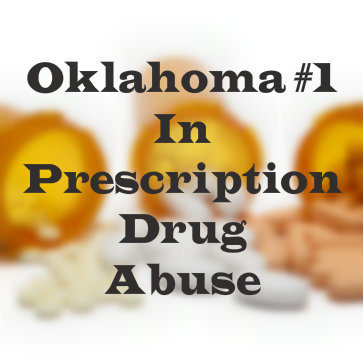
How Big Is The Prescription Drug Problem?
Last year in Oklahoma doctors and medical professionals wrote 10 million prescriptions for powerful opioid painkillers and other scheduled drugs. Those prescriptions were written to 142,369 patients, which averages out to 68 prescriptions per patient. Pharmacists filled those prescriptions with 597 million pills.
The detailed information is available thanks to the state’s PDMP, which electronically records the data. The hope is that doctors would look online before writing a prescription to see how often each patient has been given a script for heavy-duty medication. But reviewing the data it became evident that few doctors, just one-fourth, were using the PDMP prior to writing prescriptions for patients. Doctors are not yet legally required to check the PDMP first, but that could change.
Death Toll Rising
In 2012 there were 844 fatal overdoses in Oklahoma. That means that year more people died from drugs than were killed in car crashes, at 708. The majority of drug overdoses were accidental, and 75 percent involved prescription drugs.
The most dangerous prescription drugs in terms of overdose risk are opioids (e.g.: Vicodin, Lortab, OxyContin, Percocet), and the anti-anxiety medication Xanax. Too often people mix medications with alcohol, or take multiple meds at the same time. The stats show that two people per day are dying in Oklahoma because of prescription drug overdose. Deaths related to prescription drugs have risen 80 percent there in the past 10 years, and Oxycodone and Hydrocodone deaths in the state have quadrupled in that time.
The problem is most acute among 18- to 25-year-olds with a 10.9 percent abuse rate. Overall, 5.2 percent of Oklahomans over age 11 abuse the medications. Apart from the risk of fatal overdose, another concern about the epidemic of opioid abuse is where it tends to take people. Experts in the state say that around 85 percent of heroin users started out abusing prescription opioids.
Oklahoma is not unique. Across the country abuse of prescription drugs continues to claim a shockingly high number of lives. And where opioid use is beginning to drop, there is the selfsame increase in heroin use. Which makes it that much more important that we stop the problem before it moves to the street. We can monitor and prevent much prescription drug abuse through PDMPs. If we don’t, the problem will quickly transition to street drugs like heroin where monitoring and intervention is far less likely.
12 May 2014
Is Addiction Coverage Really Equal?
In recent years, two federal laws have guaranteed fair and equal coverage for mental health and addiction treatment. Those working in the field of addiction care are not so sure that the intent of those laws is really playing out in reality. People struggling with substance use disorders may not be getting the insurance coverage they need in order to get well.
The Federal Laws
In 2008, President Bush signed the Mental Health Parity and Addiction Equity Act. The law is supposed to ensure that health insurance plans are no more restrictive when it comes to mental health or addiction care than they are with other types of medical care. In other words, deductibles, co-pays and limits on treatment cannot be greater for mental health or addiction than anything else in the plan. The law does not require that plans cover these types of care at all.
President Obama’s Affordable Care Act added to the previous law by listing mental health and addiction treatment as essential benefits that must be covered by all health insurance plans, including those offered by small businesses and those for individuals. Prior to this law, most large company group plans included such coverage, but smaller plans often did not.
Equal Coverage Not So Equal
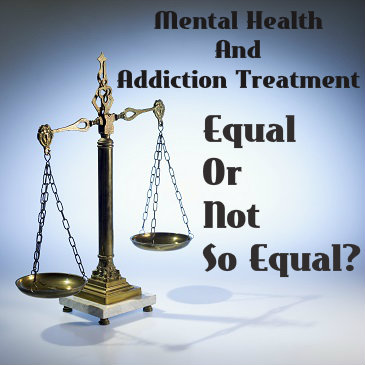 The two laws signed by Presidents Bush and Obama were intended to make sure that people needing care for mental health issues or for addiction would get the treatment they need. One of the biggest barriers to getting treatment has always been cost. If an insurance plan does not cover treatment, or if the restrictions on treatment are significant, someone who needs help may not get it. Those who are in the field of treatment for addiction are finding that the laws’ intentions are not always playing out as intended.
The two laws signed by Presidents Bush and Obama were intended to make sure that people needing care for mental health issues or for addiction would get the treatment they need. One of the biggest barriers to getting treatment has always been cost. If an insurance plan does not cover treatment, or if the restrictions on treatment are significant, someone who needs help may not get it. Those who are in the field of treatment for addiction are finding that the laws’ intentions are not always playing out as intended.
The National Association of Addiction Treatment Professionals conducts ongoing surveys and has reported that there are many denials of coverage for addiction care. Behind more than half of those denials is a debate over what is medically necessary. Unlike other medical conditions, like heart disease for instance, medical necessity for addiction is not always perfectly clear. The insurance plans need not cover care that is not deemed medically needed. Caregivers cite the changing laws as the reason insurers are getting tougher about what they will and will not cover.
One of the biggest battles over care for addicts is the number of days of coverage for residential stays. Many insurers want to cap the stay at a week or less, while addiction experts insist that patients need up to three months of treatment. Some insurers insist that treatment need not be inpatient care and that they will cover a few months of outpatient care. What is right for each patient, though, is highly individualized. Some may succeed with outpatient treatment, while others have nowhere safe to go and really need a long stay in a residential facility.
The changing laws regarding care for addiction and mental health represent an important societal shift in attitudes toward those struggling with these very real medical conditions. The shift is positive and the laws help, but there are still many bugs to work out. As insurers debate how to implement coverage that meets the requirements of the laws, addiction caregivers try to pick up the slack. It may take more time to ensure that everyone gets the help they need, but the changes so far are just not enough to reach everyone.


